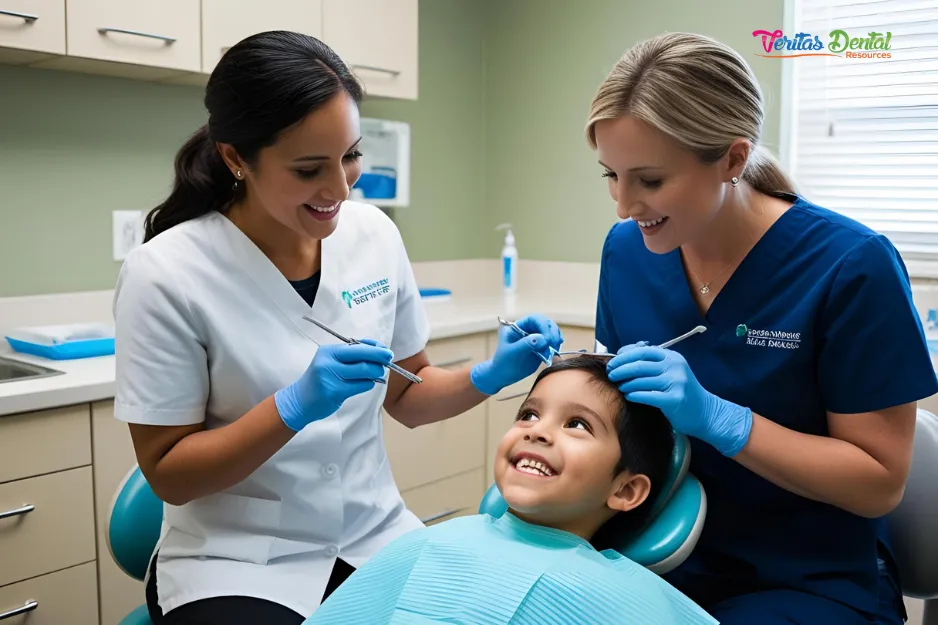
New to Dental Billing in a Pediatric Practice? Here's What You Need to Know
Starting a new role in dental billing can be overwhelming — especially in a pediatric dental office, where things work a bit differently than general dentistry. While the basics of insurance verification, claim submission, and payment posting are universal, pediatric dentistry has its own quirks, codes, and common challenges that you’ll want to master quickly.
If you're just getting started, here are some key tips and insights specifically for billing in a pediatric dental practice.
1. Know Your Age-Related Coverage Rules
Pediatric patients are often covered under state Medicaid, CHIP (Children’s Health Insurance Program), or family PPO plans. Each plan has different age limitations for services and benefits.
Many plans cover fluoride, sealants, and X-rays only up to a certain age (like 14 or 18).
Know what qualifies as pediatric benefits — some plans shift coverage once the child reaches adulthood (usually 18 or 21).
Medicaid often provides more comprehensive coverage for kids than for adults, but authorization and documentation requirements are stricter.
Pro tip: Always verify the patient's date of birth, plan details, and eligibility before each visit.
2. Understand Common Pediatric Procedure Codes
Pediatric dentistry frequently uses a set of codes that might be less common in general practice. You’ll want to get comfortable with:
D1120 – Prophylaxis (child)
D1206/D1208 – Fluoride varnish/gel
D1351 – Sealants
D9992 – Care coordination (used more often in Medicaid)
D2940/D2930/D2931 – Protective restorations/stainless steel crowns
D3220/D3221 – Pulpotomy (baby root canal)
D7111/D7140 – Extractions (erupted vs. simple)
Keep a cheat sheet of common pediatric CDT codes handy as you learn.
3. Coordinate Dental and Medical Billing When Needed
Sometimes pediatric dental procedures cross over into medical necessity, especially when:
General anesthesia is required (for very young, special needs, or anxious patients).
There are congenital abnormalities, trauma, or infections.
Surgery or sedation is done in a hospital or surgical center.
Tip: Be prepared to work with both dental and medical insurance. That means:
Verifying both policies.
Getting prior authorization (especially for OR cases).
Using medical CPT codes when billing medical insurance.
4. Watch for Frequency Limitations and Bundled Services
Pediatric dental insurance often limits:
Two exams and cleanings per year
One set of bitewings or full-mouth X-rays per 12–24 months
Sealants once per tooth per lifetime
Some plans bundle services, meaning a fluoride or X-ray might be considered included with a cleaning — and not separately billable.
Double-check coverage and EOBs (explanations of benefits) to avoid denials.
5. Master Medicaid if You Accept It
If your office accepts Medicaid, get very familiar with your state’s Medicaid dental policies. Pediatric Medicaid billing can be:
Very specific about documentation.
Strict with timely filing deadlines.
Requiring prior authorizations for things like sedation, hospital cases, or crowns.
Get comfortable with:
Submitting supporting documents (X-rays, chart notes).
Using your state’s provider portal.
Following up on rejections and resubmitting within deadlines.
6. Communicate Clearly with Parents
One of the biggest differences in pediatric billing is that you’re dealing with parents or guardians — not the patient.
That means:
Be clear about what insurance covers vs. what’s out-of-pocket.
Let parents know when you're billing medical first, and how that may delay billing or impact coverage.
Get accurate insurance info up front — kids may be covered by different parents or multiple plans.
7. Track Coordination of Benefits (COB)
Kids are often covered under two plans (e.g., both mom’s and dad’s insurance). Make sure to:
Establish the primary vs. secondary plan (usually based on the birthday rule).
Submit to the primary first, then the secondary with the primary EOB attached.
Watch for denial codes related to COB or duplicate billing.
Final Thoughts
Pediatric dental billing may feel like a whirlwind at first, but once you get familiar with the codes, coverage patterns, and communication flow, it becomes much more manageable. The key is to stay organized, detail-oriented, and proactive about verifying insurance and tracking claims.
You're an essential part of helping families get the care their kids need — and protecting the financial health of your practice. With time and experience, you’ll become a pro.
Benjamin Tuinei
Founder - Veritas Dental Resources, LLC
Phone: 888-808-4513
Services:
PPO Fee Negotiators | PPO Fee Negotiating | Insurance Fee Negotiating
Insurance Credentialing | Insurance Verifications
Websites:
www.VeritasDentalResources.com | www.VerusDental.com

